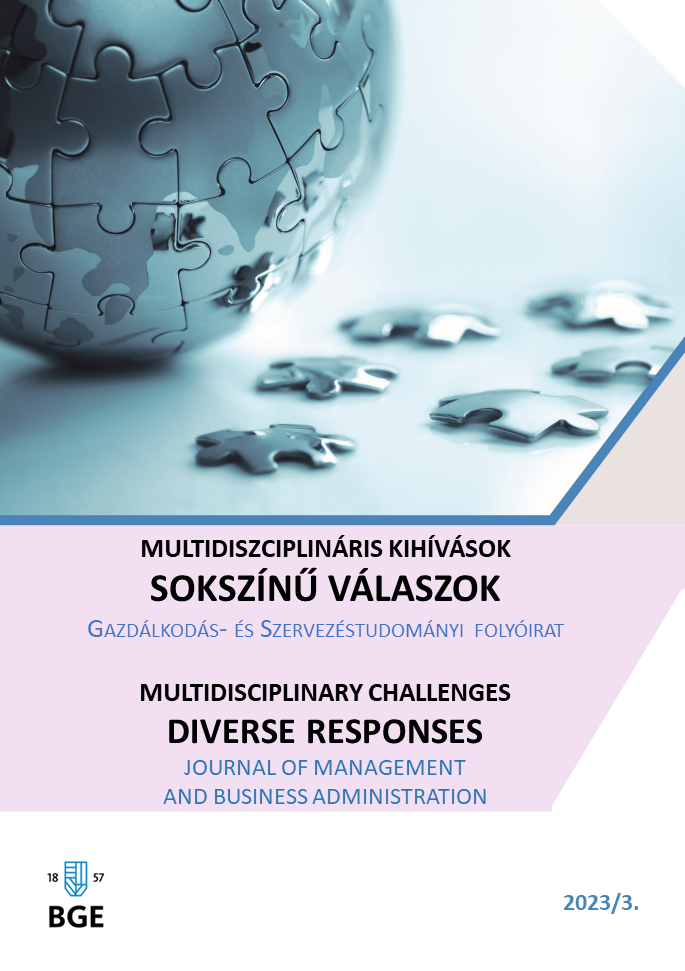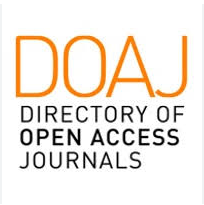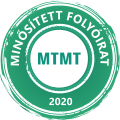Online Content Consumption Among Hungarian Fans of South Korean Pop Culture
Abstract
Since the second half of the 1990s, the spreading of South Korean popular culture gained popularity and attention. This phenomenon can be called ‘Hallyu’. Since the beginning of Hallyu, one of the key elements of the marketing strategy of South Korean CCI (creative and cultural industries) companies has been the use of modern online and digital tools. In the case of music content, for example, the free, easily accessible channels (YouTube) are the primary means of access.
The Hungarian consumers of South Korean culture are a very narrow group of consumers, estimated at around 30,000. Nevertheless, surveying the habits of such a narrow consumer group can provide an interesting experience for marketers.
The aim of this article is to summarise the online and digital communication tools and to present and analyse the online and digital communication of consumers among this specific consumer group, the domestic South Korean film series and pop music fans.
The theoretical background of the study is based on the analysis of online and digital marketing and Hallyu literature. This is followed by an analysis of the preferences of "Hallyu consumers" based on domestic research on the diffusion of Hallyu conducted in 2022. The study summarizes the attributes that characterize the consumers of this subculture, with a special focus on the use of online and digital communication and tools.
The companies involved in Hallyu are nowadays focusing on the creation of unique content using online tools, involving consumers in content production. This marketing method is also making its impact felt in our country, and research shows that fans are active in this direction (Shim & Gajzágó, 2023). These specific methods can serve as an example for other CCI organisations and businesses.
References
Abd-Rahim, A., 2019. Online fandom: social identity and social hierarchy of Hallyu fans. Journal for Undergraduate Ethnography, 9(1), 65-81.
Bae, E. S., Chang, M., Park, E. S., & Kim, D.C., 2017. The effect of Hallyu on tourism in Korea. Journal of Open Innovation: Technology, Market, and Complexity, 3(4), 22.
Bayer J., 2002. Globális média, globális kultúra. Globalizáció és civilizációk. Magyar Tudomány 47: 748-761.
Berg, S.-H. 2018. Local buzz, global pipelines and Hallyu: The case of the film and TV industry in South Korea. Journal of Entrepreneurship and Innovation in Emerging Economies 4(1), 33-52. https://doi.org/10.1177%2F2393957517749072
BTS A.R.M.Y. Census, 2022. [online] Elérhető: https://www.btsarmycensus.com/2022-results, 2023.01.26.
BTS Hungary Facebook oldal, 2018. [online] Elérhető: https://www.facebook.com/groups/BangTan.Sonyeondan.Hun, 2018.10.15.
Byeon, S., Song, W. & Choi, B., 2015. Influence of Korean drama viewing on Korean national image, mediated by consumption of Korean products in China. The Journal of the Korea Contents Association, 15(6), 91-103.
Chang, W., & Park, S.E. 2019. The Fandom of Hallyu, a Tribe in the Digital Network Era: The Case of ARMY of BTS. Kritika Kultura
Chen S., 2016. Cultural technology, A framework for marketing cultural exports – analysis of Hallyu (the Korean wave), International Marketing Review, 33(1), 25-50, ©Emerald Group Publishing Limited, 0265-1335, https://doi.org/10.1108/IMR-07-2014-0219
Comunian, R., Chapain, C. & Clifton, N., 2010. Location, location, location: exploring the complex relationship between creative industries and place. Creative Industries Journal, 3(1), 5-10.
De Mente, B. L. 2018. A koreai észjárás. Budapest: Pallas Athéné.
Dél-Korea Facebook oldal, 2022. [online] Dél-Korea │델코리아 | 한국과 헝가리 | 한헝그룹 Elérhető: https://www.facebook.com/groups/delkorea, 2022.02.12.
Felvi.hu: Elmúlt évek statisztikái 2023. (2001/Á-2023/K), [online] Elérhető: 2023.01.16., https://www.felvi.hu/felveteli/ponthatarok_statisztikak/elmult_evek/!ElmultEvek/index.php/elmult_evek_statisztikai/ponthatarok?filters%5Bsta_int_id%5D=12&filters%5Bsta_kar_id%5D=243&filters%5Bsta_ev%5D=
Grąbczewska, K. (2021). The relationship of marketing communication and customer behaviour in the online store industry. Catallaxy. 6(1), 19-27. https://doi.org/10.24136/cxy.2021.002.
Huat, C.B. 2012. Structure, Audience and Soft Power in East Asian Pop Culture, Hong Kong University Press, Hong Kong.
Huh, C. & Wu, J., 2017. Do Hallyu (Korean Wave) exports promote Korea’s consumer goods exports? Emerging Markets Finance and Trade 53(6): 1388-1404. https://doi.org/10.1080/1540496X.2017.1313161
Jin, D.Y. & Hyangsoon, Y.I. 2020. Transnationality of popular culture in the Korean Wave. Korea journal, 60(1), 5-16.
Jin, D.Y., 2021. Ten Myths About the Korean Wave in the Global Cultural Sphere. International Journal of Communication (19328036), 15.
Jin, D.Y. 2023. “Understanding the Korean Wave Transnational Korean Pop Culture and Digital Technologies“, Routledge, 282 p.
Kim, S.M., & Park, M.J., 2020. Evaluation of cross-national global market segmentation and strategy: The case of Korean Wave for ASEAN countries. Asia Pacific Management Review, 25(4), 207-215.
Kim, S., Kim, S. & Han, H., 2019. Effects of TV drama celebrities on national image and behavioral intention. Asia Pacific Journal of Tourism Research, 24(3), 233-249.
Kim, Youngmin C. & Marinescu, V., 2015. “Mapping South Korea’s Soft Power: Sources, Actors, Tools, and Impacts”, Romanian Journal of Social Sciences 2015. 1: 1-6.
Kliatchko, Jerry G., 2020. Integrated marketing communication – Putting the human person in the core. Cambridge Scholars Publishing.
KOFICE 2021. Global Hallyu trends, Handbook on the analysis of major issues in Hallyu and regional trends throughout 2021, [online] Elérhető: http://kofice.or.kr/b20industry/b20_industry_00_view.asp?seq=1219&page=1&find=&search=, 2022.03.20.
Koreai Kulturális, Turisztikai és Sport Minisztérium: Tartalomipari statisztikai felmérés 2019, [online] 83.p., 2023.05.10.
Kovács, A. & Papp, V., 2021. Social Media: Platforms, Content And Customers In The Human-To-Human (H2H) Era. In: Yashar, Salamzadeh (szerk.) Digital Transformation: A human-centric approach Isztambul, Törökország: Efe Akademi Yayınevi (2021) 198 p. pp. 69-89.
Kreutzer, Ralph T., 2022. Online marketing. Springer.
Kwon, S.H. & Kim, J., 2013. From censorship to active support: The Korean state and Korea’s cultural industries. The Economic and Labour Relations Review 24 (4): 517-532. https://doi.org/10.1177%2F1035304613508873
Leung, S., 2012. Catching the K-Pop wave: globality in the production, distribution, and consumption of South Korean popular music. Senior Capstone Projects, 149, 1-85.
Lie, J., 2012. What is the K in K-pop? South Korean popular music, the culture industry, and national identity, Korea Observer, 43(3), 339-363.
Lim, S., & Giouvris, E. 2020. Tourist arrivals in Korea: Hallyu as a pull factor. Current issues in Tourism, 23(1), 99-130.
Min, W., Jin, D.Y. & Han, B., 2018. Transcultural fandom of the Korean Wave in Latin America: through the lens of cultural intimacy and affinity space. Media, Culture Society: 0163443718799403. (hivatkozva Molnarra (2014) https://doi.org/10.1177%2F0163443718799403
MyDramalist. com, 2023. [online], Elérhető: 2023.06.14., https://mydramalist.com/
Neszmélyi, Gy. 2020. A koreai köztársaság kereskedelmi politikája és a koreu szabadkereskedelmi megállapodás. Földrajzi Közlemények 144 (3): 274-293. https://doi.org/10.32643/fk.144.3.3
Netflix.com, 2023. [online] Elérhető: https://www.netflix.com/tudum/top10/most-popular/tv-non-english?fbclid=IwAR0eW28yXiWcQMTEgRk_rwwoGyEgrgBQXTGlaZGGRqcfvasUMNSzQL-6YFE (2023.09.06.)
Nye J. & Kim Y., 2013. Soft power and the Korean Wave, in Kim, Y. (Ed.). 2013. The Korean wave: Korean media go global. Routledge.
Oh, I. & Park, G.S., 2012. From B2C to B2B: Selling Korean pop music in the age of new social media. Korea Observer 43(3), 365-397.
Otmazgin, Nissim, & Lyan I., 2013. “Hallyu Across the Desert: K-pop Fandom in Israel and Palestine”. Cross-currents: East Asian History and Culture Review 9, 69-87
Parc, J., 2021. Measuring the Impact of Hallyu on Korea's Economy: Setting Off on the Wrong Foot. Korea's Economy, 32, 27-35.
Parc, J., 2022. Measuring the Impact of Hallyu on Korea's Economy: Setting Off on the Wrong Foot. Korea's Economy, 32, 27-35.
Pratamasari, A., 2017. International business strategy in selling Korean pop music: a case study of SM entertainment. Jurnal Global & Strategis, 10(2), 221.
Shim, D., 2002. South Korean media industry in the 1990s and the economic crisis. Prometheus, 20(4), 337-350.
Shim, D., 2006. Hybridity and the rise of Korean popular culture in Asia. Media, Culture and Society 28 (1): 25-44.
Sinnreich, A., 2007. Henry Jenkins: Convergence Culture: Where Old and New Media Collide. International Journal of Communication, 1(1), 4.
Shim, D., 2008. The growth of Korean cultural industries and the Korean wave. East Asian pop culture: Analysing the Korean wave, 1, 15-32.
Shim, D. 2023. 한국국제문화교류진흥원 20주년 기념 토론회 개최 (Konferencia a Koreai Nemzetközi Kulturális Csereügynökség (KOFICE) 20. évfordulóján), [online], Elérhető: https://www.gukjenews.com/news/articleView.html?idxno=2724986&fbclid=IwAR3kzyKwhPDIQe_UZZNyEOzdwDKcmnteGi-RWkz5kYuggsiEWr-8ZCpypL4, 2023.05.23.
Shim, D. & Gajzágó, É., 2023. “The Rise of Korean Culture in Europe Based on a Survey of K-Culture Fans in Hungary”, Media Studies 1/2023, 27-53.
Shin, Solee. 2017. “Niche, ethnic and global operations: Models of production and circulation of East Asian popular music”. European Journal of East Asian Studies, 16(1), 5-35.
Shin, B.K., Oh, M.H., Shin, T.S., Kim, Y.S., You, S.M., Roh, G.Y. and Jung, K.W., 2014. The impact of Korean Wave cultural contents on the purchase of Han-Sik (Korean food) and Korean product-Based on the survey of Asia (Japan, China), Americas and Europe. Journal of the Korean Society of Food Culture, 29(3), 250-258.
Sikos T, T., Kozák, T. & Kovács, A., 2019. New Retail Models in Online and Offline Space. Deturope: The Central European Journal Of Regional Development And Tourism 11(3), 9-28.
Tóth, O., 2016. A kultúramarketing hazai és nemzetközi jelentősége, különös tekintettel a kulturális turizmus gazdaságélénkítő szerepére. Marketingkaleidoszkóp, 2016 (Prof. Dr. Piskóti István ed.): 176
Törőcsik M. & Szűcs K., 2021. Fogyasztói magatartás - Mintázatok, trendek, alkalmazkodás. Akadémiai Kiadó. Budapest.
Trzcińska, J., 2018. Polish k-pop fandom: phenomenon, structure & communication. Stowarzyszenie Badaczy Popkultury i Edukacji Popkulturowej Trickster.
Wang, Q., Li, R., Wang, Q., & Chen, S., 2021. Non-fungible token (NFT): Overview, evaluation, opportunities and challenges. arXiv preprint arXiv:2105.07447.
Yoon, K., Min, W., & Jin, D.Y., 2020. Consuming the Contra-Flow of K-pop in Spain. Journal of Intercultural Studies, 41(2), 132-147.
Zhou, M., 2022. South Korean Entertainment Industry’s Marketing Management on Chinese Market. In 2022 6th International Seminar on Education, Management and Social Sciences (ISEMSS 2022) (pp. 452-462). Atlantis Press.


























